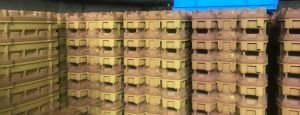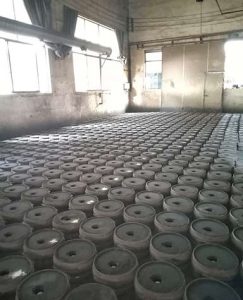The outer sand molds used in sand casting are divided into three types: clay green sand, clay dry sand and chemical hardened sand, according to the binder used in the sand and the way it builds its strength.
This time, I will briefly introduce the advantages and disadvantages of Yide Casting‘s green sand casting process. Hope to help casting buyers understand its characteristics.

sand casting molding from Yide casting
Advantages:
In China, the green sand casting process is very common. Because of its advantages in the casting process, almost all iron foundries can produce iron castings through this process.
1. Simple production process
In contrast, the production process of green sand castings is very simple and therefore easy to handle. These materials are simple and easy to use.
2. Lower production cost
Because the material is simple and the price is relatively low, the production cost of green sand castings is low. Therefore, green sand castings are cheaper than resin sand castings and shell mold castings. As for the current cast iron prices, you can visit Yide Casting’s website.
3. Higher productivity
The green sand casting process can achieve very high productivity. Floor mold castings made of green sand can produce 100 to 200 sand box castings per day, for example, about 100 to 2000 pieces per day. The green sand automatic forming process can produce 20 tons of castings per day.
In addition, the green sand casting process can produce castings with a unit weight from several hundred grams to several tons.

clay sand castle cast
Disadvantages:
Although green sand casting has many of the above advantages, the disadvantages of its process are inevitable.
1. More casting defects
Green sand mold is a soft mold, not as hard as resin sand mold and shell molding. Therefore, there are more casting defects such as sand slag, sand holes, pores and shrinkage.
2. Rough surface quality
The casting surface through the green sand casting process is very rough. If the iron foundry uses very fine green sand, the rough surface will be better. However, few foundries in China use very fine green sand.
3. Poor casting size
Due to the large shrinkage rate of green sand, the size of the mold will change greatly during molding and cooling. Therefore, the green sand casting process will result in larger dimensional tolerances. Usually, it can reach the dimensional tolerance of castings from CT10 to CT12.
4. Unstable casting quality
The temperature has a certain influence on the casting quality of the green sand casting process. Therefore, the iron foundry should maintain a good temperature in the cold winter. In addition, as a manual floor molding, the skills of the workers will have a key impact on the quality of castings.


